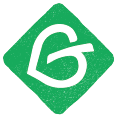General Assembly Registration and Accreditation Process
Overview
The online registration and accreditation process generates three databases that must be correlated by the hosting committee and the accreditation team:
- Registration
- Payment
- Delegates
Everyone attending the meeting must register, either via the registration web page on cagreens.org or in person on the morning of the meeting. Prior to the meeting, a designated person from each county is required to submit the county's list of delegates.
The registration database must be annotated with who has pre-paid. The registration database also contains a field indicating delegate (or alt. delegate) status. This signals the registration desk to send those people to the accreditation table. The accreditation team verifies these people based on the lists submitted by counties. Delegates must also be registered before being issued a delegate card. Walk-in delegates (i.e. their county did not submit a list) must have a letter signed by an authorized County Council member verifying their delegate status.
Registration and payment is handled via the registration web page on cagreens.org and on-site by the host committee. Accreditation is the responsibility of the state meeting committee.
The deadline for online registration and submission of delegate lists is midnight on the Wednesday before the meeting. After that, people must be accommodated as “walk-ins.”
Registration
The goal of the registration desk is to move the meeting participants through the registration process as quickly as possible on Saturday morning. A large block of participants tend to show up in the last 15 minutes before the meeting starts on Saturday.
After the Saturday morning registration, the table should be staffed with one person from the host committee to serve as the general information point. There should be at least two staffers at the table on Sunday morning to register people who weren't there on Saturday, reissue name tags as needed, and direct delegates to the accreditation table.
Registration Table
Having four parallel registration lines has shown to be the most efficient configuration. Dividing the lines by counties has proven more useful because questions arise as to who, or how many, from a given county is/are present.
Each of the four lines should handle an equal (as possible) number of people. Using the delegate allocation as an estimator of how many people we anticipate from each county, the divisions would be:
|
Alameda |
Los Angeles |
Orange |
San Joaquin |
|
Butte |
Marin |
Placer |
San Luis Obispo |
|
Calaveras |
Mendocino |
Riverside |
San Mateo |
|
Contra Costa |
Merced |
Sacramento |
Santa Barbara |
|
Del Norte |
Monterey |
San Bernardino |
Santa Clara |
|
El Dorado |
Napa |
San Diego |
Santa Cruz |
|
Fresno |
Nevada |
San Francisco |
Shasta |
|
Humboldt |
|
|
Solano |
|
Imperial |
|
|
Sonoma |
|
Lake |
|
|
Stanislaus |
|
|
|
|
Ventura |
|
|
|
|
Yolo |
The four largest counties are (in descending order) Los Angeles, Alameda, San Francisco and San Diego.
The registration table must have large signs above each of the four lines listing the counties serviced in that line. Ideally, listing all counties for each line would be best. But it may be more practical to list Alameda, Lake, etc.
Registration Form
There is a registration page on the state web site. That page dumps data the state party on-line data base. Host committee members will be given access to that data to prepare on-site check-in forms.
Name Tags
The host committee prepares names tags, which denote that the person has registered and paid.
Pre-printed name tags are better than requiring everyone to write their name on a tag at the registration table. If items are costed separately, a coding system on the name tags must be devised to indicate who has paid for what. Applying colored adhesive dots has been the most popular method, but different colored name tags could also be used. It is not necessary to distinguish delegate name tags since they receive a unique delegate card.
Participants have to use the name tags for the entire weekend. So tags in a holder attached with a pin or hung by a string work better than adhesive tags.
Participants have to bring their name tags with them when they return to the meeting on Sunday. There are always those who have lost or forgotten their tag. Use the registration forms from Saturday to reissue name tags. Adhesive tags can be used at this point.
Accreditation
The Accredidation Team will create and print the delegate cards for the meeting. A separate set of cards will be printed for each day of the GA. The two sets will be printed on different colored paper to distinguish each from the other.




